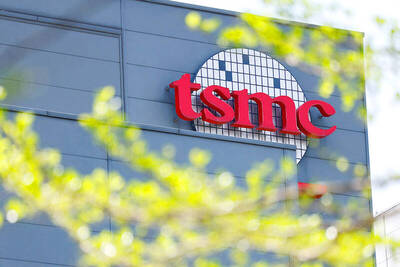Singapore's economy contracted for the first time in more than four years in the fourth quarter as weakness in the manufacturing sector outweighed windfall growth from a construction boom, the government said yesterday.
Singapore's economy shrank 3.2 percent from the third quarter on a seasonally adjusted annualized basis, the Ministry of Trade and Industry's advance estimate showed. It expanded 4.4 percent in the July-September quarter compared with the second.
A Dow Jones Newswires poll of economists had forecast a 4.2 percent rise in the final quarter of the year. The contraction marked the biggest decline since the 7.6 percent drop in the second quarter of 2003.
Singapore suffered from slower exports of drugs and electronics in the fourth quarter, and while services and construction remained healthy, manufacturers may be vulnerable to softer external demand this year.
Manufacturing output rose just 0.5 percent from a year earlier in the fourth quarter after growing 10.3 percent in the previous three months. The sector expanded 5.6 percent for the full year.
Construction output rose 24.4 percent compared with the same quarter a year ago, accelerating from 19.2 percent growth in the third quarter.
The services sector was also a key growth driver in the fourth quarter, led by financial institutions and a healthy tourism industry.
The services sector grew 8.3 percent year-on-year in the fourth quarter, matching the pace of the previous three months. For the full year, services expanded 8.1 percent.
Gross domestic product rose 6 percent from a year earlier, less than the 9 percent rise posted in the third quarter and coming in short of a poll forecast for 7.8 percent growth.
For the full year, Singapore's economy grew 7.5 percent, which was less than the 7.9 percent rise posted in 2006.
The downturn in the fourth quarter could cause a dilemma for the island's central bank as the risk of an economic slump precludes monetary tightening even as the island faces the highest inflation since the early 1980s.
Singapore's central bank uses foreign exchange rather than interest rates to control prices because external trade dwarfs the domestic economy.
Last October it said it would let the Singapore dollar appreciate at a faster pace to cap surging costs of imported food and energy.
The consumer price index -- a non-core measure of costs for goods and services -- rose 4.2 percent from a year earlier in November, the fastest pace since May 1982.

WEAKER ACTIVITY: The sharpest deterioration was seen in the electronics and optical components sector, with the production index falling 13.2 points to 44.5 Taiwan’s manufacturing sector last month contracted for a second consecutive month, with the purchasing managers’ index (PMI) slipping to 48, reflecting ongoing caution over trade uncertainties, the Chung-Hua Institution for Economic Research (CIER, 中華經濟研究院) said yesterday. The decline reflects growing caution among companies amid uncertainty surrounding US tariffs, semiconductor duties and automotive import levies, and it is also likely linked to fading front-loading activity, CIER president Lien Hsien-ming (連賢明) said. “Some clients have started shifting orders to Southeast Asian countries where tariff regimes are already clear,” Lien told a news conference. Firms across the supply chain are also lowering stock levels to mitigate

IN THE AIR: While most companies said they were committed to North American operations, some added that production and costs would depend on the outcome of a US trade probe Leading local contract electronics makers Wistron Corp (緯創), Quanta Computer Inc (廣達), Inventec Corp (英業達) and Compal Electronics Inc (仁寶) are to maintain their North American expansion plans, despite Washington’s 20 percent tariff on Taiwanese goods. Wistron said it has long maintained a presence in the US, while distributing production across Taiwan, North America, Southeast Asia and Europe. The company is in talks with customers to align capacity with their site preferences, a company official told the Taipei Times by telephone on Friday. The company is still in talks with clients over who would bear the tariff costs, with the outcome pending further

Six Taiwanese companies, including contract chipmaker Taiwan Semiconductor Manufacturing Co (TSMC, 台積電), made the 2025 Fortune Global 500 list of the world’s largest firms by revenue. In a report published by New York-based Fortune magazine on Tuesday, Hon Hai Precision Industry Co (鴻海精密), also known as Foxconn Technology Group (富士康科技集團), ranked highest among Taiwanese firms, placing 28th with revenue of US$213.69 billion. Up 60 spots from last year, TSMC rose to No. 126 with US$90.16 billion in revenue, followed by Quanta Computer Inc (廣達) at 348th, Pegatron Corp (和碩) at 461st, CPC Corp, Taiwan (台灣中油) at 494th and Wistron Corp (緯創) at

NEGOTIATIONS: Semiconductors play an outsized role in Taiwan’s industrial and economic development and are a major driver of the Taiwan-US trade imbalance With US President Donald Trump threatening to impose tariffs on semiconductors, Taiwan is expected to face a significant challenge, as information and communications technology (ICT) products account for more than 70 percent of its exports to the US, Chung-Hua Institution for Economic Research (CIER, 中華經濟研究院) president Lien Hsien-ming (連賢明) said on Friday. Compared with other countries, semiconductors play a disproportionately large role in Taiwan’s industrial and economic development, Lien said. As the sixth-largest contributor to the US trade deficit, Taiwan recorded a US$73.9 billion trade surplus with the US last year — up from US$47.8 billion in 2023 — driven by strong